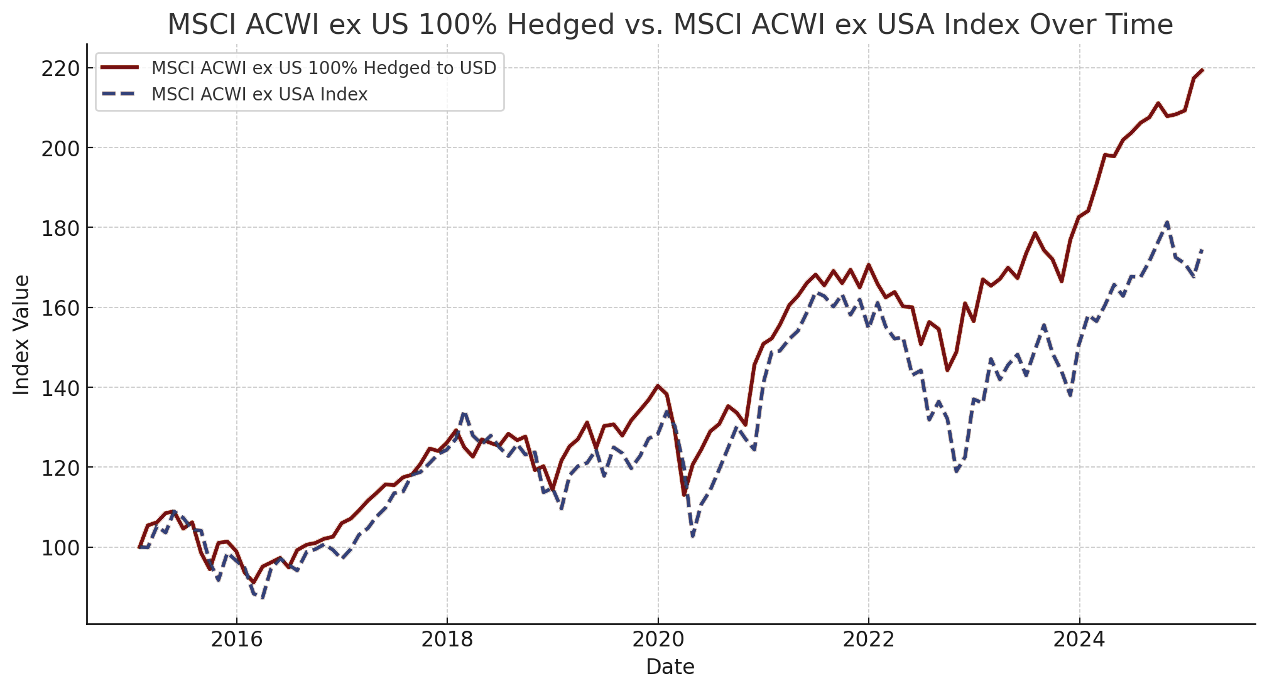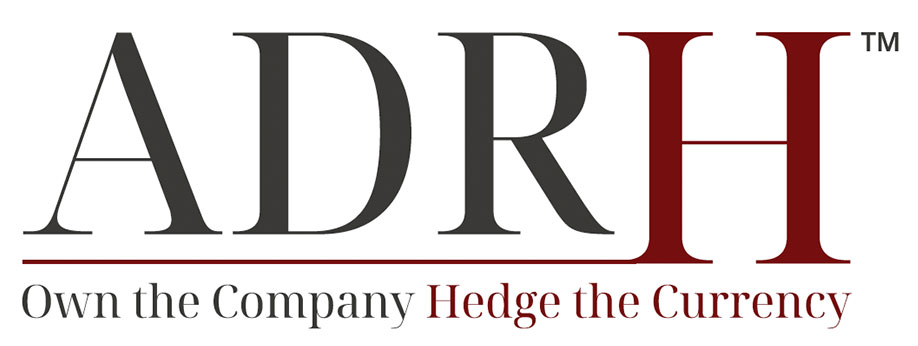Unlock the Power of Your International Investments with ADRhedged™ ETFs
The $1 Trillion Problem Impacting International Dollar-denominated Investment Portfolios
Data show that nearly $1 trillion of U.S. capital is parked in ADRs—American Depositary Receipts—that enable investors to gain exposure to non-U.S. listed companies like Toyota Motors, Shell, or HSBC.
Whether you’re a financial advisor or a do-it-yourselfer, you’ve heard this before: investing in international markets is a cornerstone of a well-diversified portfolio.
What an overwhelming majority of investors, including financial advisors, do not consider is investing in ADRs gives you exposure to the company as well as the underlying currency of the country the company is domiciled in. Because of this, investors often don’t realize how much their returns can be impacted (negatively or positively) by volatility between the U.S. dollar and the underlying foreign currency.
When you buy an ADR, you’re not just investing in the company’s performance, you’re also exposed to the performance of the local currency relative to the U.S. dollar.
In today’s world, where the dollar shows signals of continuing to strengthen and international currencies are stumbling, this isn’t just a minor oversight, it’s a massive risk that everyone needs to be aware of.
Now there’s a solution to this problem:
Precidian’s ADRhedged™ ETFs. These aren’t your typical broad-market international funds. They’re single-stock ETFs designed to give you targeted exposure to world-class international companies with built-in currency hedging.
The Macro Perspective
To understand the real performance impact currency risk can have on international investing the chart below shows a performance comparison between the MSCI ACWI ex USA Index and The MSCI ACWI ex US 100% Hedged against the USD Index. The MSCI ACWI ex USA Index captures large and mid-cap representation across Developed Markets (DM) countries (excluding the US) and Emerging Markets (EM) countries–85% of the global equity opportunity set outside the US. The MSCI ACWI ex USA currency hedged index neutralizes the impact of currency fluctuations by using financial instruments to offset exchange rate movements, effectively isolating equity returns from FX volatility.

Over the period from January 30, 2015, to February 28, 2025, the currency-hedged index outperformed the unhedged version by approximately 2.42% per year on an annualized basis, resulting in a cumulative outperformance of nearly 45 percent. This reinforces the fact that currency fluctuations can be a major drag on returns, and failing to hedge FX risk can significantly erode performance over time. As the data demonstrates, those who remained unhedged missed out on substantial gains simply due to currency depreciation against the U.S. dollar.
The ADRhedged™ Case Study
Understanding the macroeconomic picture and how hedging can potentially benefit investors over the long term, a look at the short-term provides a complimentary picture. Take for instance HSBC Holdings plc, the largest Europe-based bank by total assets, which trades as an ADR in the U.S. under the ticker: HSBC.
Its ADR trades in U.S. dollars on American exchanges, but its value is tied to:
1. How HSBC’s stock performs on the London Stock Exchange (in British pounds), and
2. How the pound moves against the dollar.
If the pound weakens against the dollar, your returns should underperform the local shares. That’s currency risk.
Below shows a comparison of the Precidian ADRhedged™ ETFs and their performance against the U.S.-listed ADR equivalent for London-based securities. As the performance shows, each hedged ETF has performed stronger than the ADR-listed security.
Here's How They Work

You buy the ADRhedged™ ETF of your choosing, just like any stock or ETF on a U.S. exchange.

You get exposure to the underlying ADR but with an embedded currency hedge designed to mitigate the volatility between the local currency and the U.S. dollar.
In other words, your returns will be more closely aligned with the performance of the underlying local shares.
Now multiply that across a $1 trillion market. Unhedged international exposure is leaving American investors vulnerable during times of U.S. Dollar outperformance—now there is a solution to this hidden problem.
The Macro Perspective
Until now, currency hedging was a playground for Wall Street’s elite like hedge funds and institutional giants. For many retail investors, replicating currency-hedging approaches in your brokerage account is not an option for individual securities. ADRhedged™ ETFs provide everyone with currency-hedged exposure to international companies. This is a simple, cost-effective, and accessible solution investors did not know they needed.
Ready to ditch the unhedged trap and unlock the full potential of your international investments? Click here to learn more about ADRhedged™ ETFs and take the first step toward a smarter way to invest internationally.
Subscribe Now
Stay up to date about current ADRH listings and be the first to know about upcoming ADRH launches.
"*" indicates required fields


